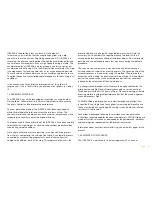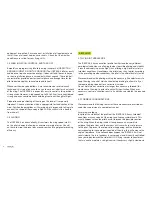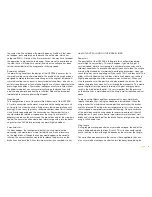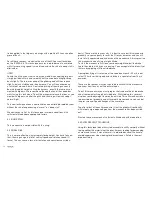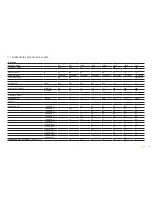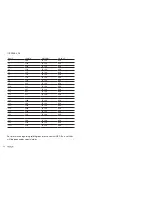
11
Before trying to remove a knot, make sure there are no pilots flying
nearby and never try these manoeuvres near the mountainside. If the
knot is too tight and you cannot remove it, carefully and safely fly to the
nearest landing place.
5. losING HeIGHT
The knowledge of the different descent techniques is an important
resource to use in certain situations. The most adequate descent method
will depend on the particular situation.
We recommend that you learn to use these manoeuvres under the tuition
of a competent school.
5.1 ears
Big ears is a moderate descent technique, achieving about –3 or –4 m/s
and a reduction in ground speed of between 3 and 5 km/h. effective
piloting then becomes limited. The angle of incidence and the surface
wing load also increases. push on the accelerator to restore the wing’s
horizontal speed and the angle of incidence.
To activate big ears take the line on each a’ risers and simultaneously,
smoothly pull them outward and downward. The wingtips will fold in. let
go of the lines and the big ears will re-inflate automatically. If they do not
re-inflate, gently pull on one of the brake lines and then on the opposite
one. We recommend that you re-inflate asymmetrically, not to alter the
angle of incidence, more so if you are flying near the ground or flying in
turbulence.
Please, read this carefully: risk of full stall!!!
The ICepeaK 8 has a relatively short brake travel and it should be
noted that by reaching for the 4a3 line to make big ears it is possible
to apply brake pressure without realising it. The same happens whilst
pulling down the 4a3 line to make the ears. This can obviously lead to a
significant speed decrease.
The ICepeaK 8 has a new high arch concept and applying ears induces
more resistance. With this new arch, the ears don’t stick but they do
tend to “hang”. Because of this, there will be more resistance, compared
to ears on a standard glider.
The ICepeaK 8 is designed with little cord, which is good innormal flight
conditions.However, on the other hand the glider could get into trouble
when recovering normal speed if it is allowed ears and achieve an
extreme angle of incidence.
These are 3 particularities, which together with turbulent conditions
could cause an unintentional stall.
The solution: big ears may still be applied but the pilot must be fully
aware of the above-mentioned points and act accordingly. To avoid the
stall simply use the accelerator halfway (this is sufficient) to increase
the speed, which naturally risers the speed and decreases the angle
of incidence. In this way you will maintain a safe margin and avoid this
phenomenon. Take care not to pull the brakes while making the ears!!
5.2 4C3 TeCHNIQUe
on the new generation paragliders the application of big ears can create
a high degree of trailing turbulence which in turn creates a significant
loss of airspeed. When big ears are applied to high aspect ratio wings
the ears tend to “flap” which also adds to the amount of unwanted
turbulence.
This new rapid descent technique was first discovered by our Niviuk
team pilots in 2009 while flying a competition prototype wing, which
because of its line plan and high aspect ratio would not allow big ears
Summary of Contents for ICEPEAK 8
Page 1: ...USER S MANUAL ICEPEAK 8...
Page 22: ...22 11 8 FOLDING LINES PLAN...
Page 28: ...28 11 11 ATTACHMENT POINTS POSITION...
Page 29: ...29 11 12 TENSION BANDS...
Page 30: ...30 11 13 MINIRIBS...
Page 31: ...31 11 14 DIAGONALS...
Page 32: ...32 11 15 INLET SHAPE...
Page 33: ...33 12 CERTIFICATION SPECIMEN TEST ICEPEAK 8 22 ICEPEAK 8 24...
Page 34: ...34 ICEPEAK 8 26...





